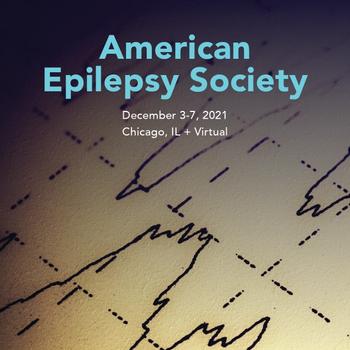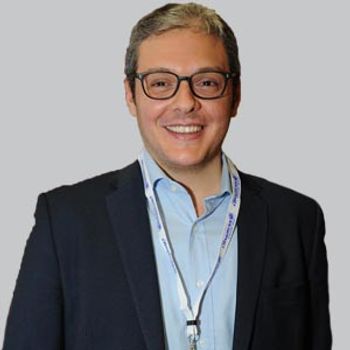
Over a 10-year period, apomorphine sublingual film was projected to be dominant in 70% of patients compared with apomorphine hydrochloride injection and 71% vs levodopa inhalation powder.

Marco Meglio, Assistant Managing Editor for NeurologyLive, has been with the team since October 2019. Follow him on Twitter @marcomeglio1 or email him at [email protected]

Over a 10-year period, apomorphine sublingual film was projected to be dominant in 70% of patients compared with apomorphine hydrochloride injection and 71% vs levodopa inhalation powder.

The director of the Tuberous Sclerosis Clinic at Cincinnati Children’s provided insight on promising drug developments for tuberous sclerosis complex and other notable priorities within the space.

Jessica Fesler, MD, MEd, staff epileptologist, Cleveland Clinic, offered insight on the future of seizure apps and how if improved, they could alter the treatment of patients with epilepsy.

The newly adopted AASM guidelines are designed to help health care providers treating obstructive sleep apnea know when to discuss referral for upper airway or bariatric surgery evaluation with their patients.

The medical director of the Epilepsy program at the University of Toronto discussed her presentation at AES 2021 regarding the need to change how clinicians view and treat patients with developmental epileptic encephalopathies.

Those who demonstrated amyloid-ß positivity with clinical anxiety were at a statistically significant increased risk of incident mild cognitive impairment.

Leaders in the epilepsy space provided their thoughts on the most promising aspects, initial takeaways, and dominating conversations at the 2021 American Epilepsy Society annual meeting.

Despite displaying safety, after accounting for baseline differences between groups, statistically significant clinical improvement was not observed in key secondary outcomes, exploratory clinical outcomes, or responder analyses.

Jeffrey Cummings, MD, ScD, discussed how the successes of new biomarkers and composite instruments will be crucial to the development of disease-modifying agents for Alzheimer disease.

Across all surgical procedures, the percentage of patients with seizure freedom for at least 12 months ranged from 20% to 35.7% for patients receiving cenobamate.

The staff epileptologist at Cleveland Clinic’s Epilepsy Center discussed the current state of seizure tracking applications, their limitations, and their untapped potential to be integrated in clinical care and with electronic medical records.

In total, 6.4% of those with intellectual disability achieved seizure freedom and 37.5% had at least a 50% responder rate after treatment with perampanel.

While typically thought of as a disease that affects younger populations, Rebecca O’Dwyer, MD, stressed the importance and nuances of caring for older adults with epilepsy.

Half of the patients who were on a flexible, longer-term Cognitive Behavioral Therapy-informed psychotherapy treatment schedule demonstrated improvements in seizure frequency by more than 50%.

At the 12-month mark, more than 64% of patients had remained on perampanel, with an overall mean retention time of 10.8 months.

More than two-thirds of patients who received prednisolone after showing no response to vigabatrin demonstrated complete electroclinical response at 2 weeks, with most sustaining response at 6 weeks.

After previously showing proof-of-concept in a phase 2 setting, investigators will continue to evaluate efficacy and safety of apitegromab, potentially the first muscle-directed therapy for patients with SMA.

There was a statistically significant difference in epileptic seizure frequency means across baseline and the 6- and 12-month follow-up visits.

The FDA-approved preventive therapy for migraine was well-tolerated, with low dropout rates, and showed sustained clinically meaningful outcomes across a 2-year stretch.

The director of the Chambers-Grundy Center for Transformative Neuroscience at the University of Nevada–Las Vegas discussed new data that highlights wasted expenditures from Alzheimer trials and the importance of understanding their impacts. [WATCH TIME: 3 minutes]

After demonstrating a significant effect in reducing the frequency of drop seizures, fenfluramine aims to build on its previous indication in rare epileptic disorders, as it is currently approved to treat Dravet syndrome.

The director of the Chambers-Grundy Center for Transformative Neuroscience at the University of Nevada–Las Vegas discussed his recently published research on the costs of developing treatments for Alzheimer disease.

Phase 3 study represented the highest research and development costs for Alzheimer disease treatments, with more than $24.1 billion incurred.

In addition to a well-tolerated safety profile, investigators observed a dose proportional increase in plasma pharmacodynamics in the MONARCH study cohort of 21 children and adolescents.

Annualized attack rate was reduced to 0.08 attacks per year after the first administration of inebilizumab, similar to those who were not previously exposed to rituximab.

As more organizations begin to adopt palliative care practices for patients with Parkinson disease, some may turn to the implemented plans of Cleveland Clinic as an example to follow.

Positive phase 2 data resulted in a breakthrough therapy designation for donanemab, (Eli Lilly), prompting a biologics license application submission for the agent.

The Bruton tyrosine kinase inhibitor has been evaluated in 2 phase 3 trials, GEMINI 1 and GEMINI 2 (NCT04410978; NCT04410991), in patients with relapsing-remitting and relapsing secondary progressive MS.

In a NeurologyLive® Insights series, experts in the diagnosis and treatment of Dravet syndrome discussed the management of the disease and the utilization of approved treatments to improve outcomes in patients.

The director of the Comprehensive Epilepsy Center at NYU Langone discussed the large-scale impact heart rate variability has on preventing SUDEP and the unanswered questions that remain.